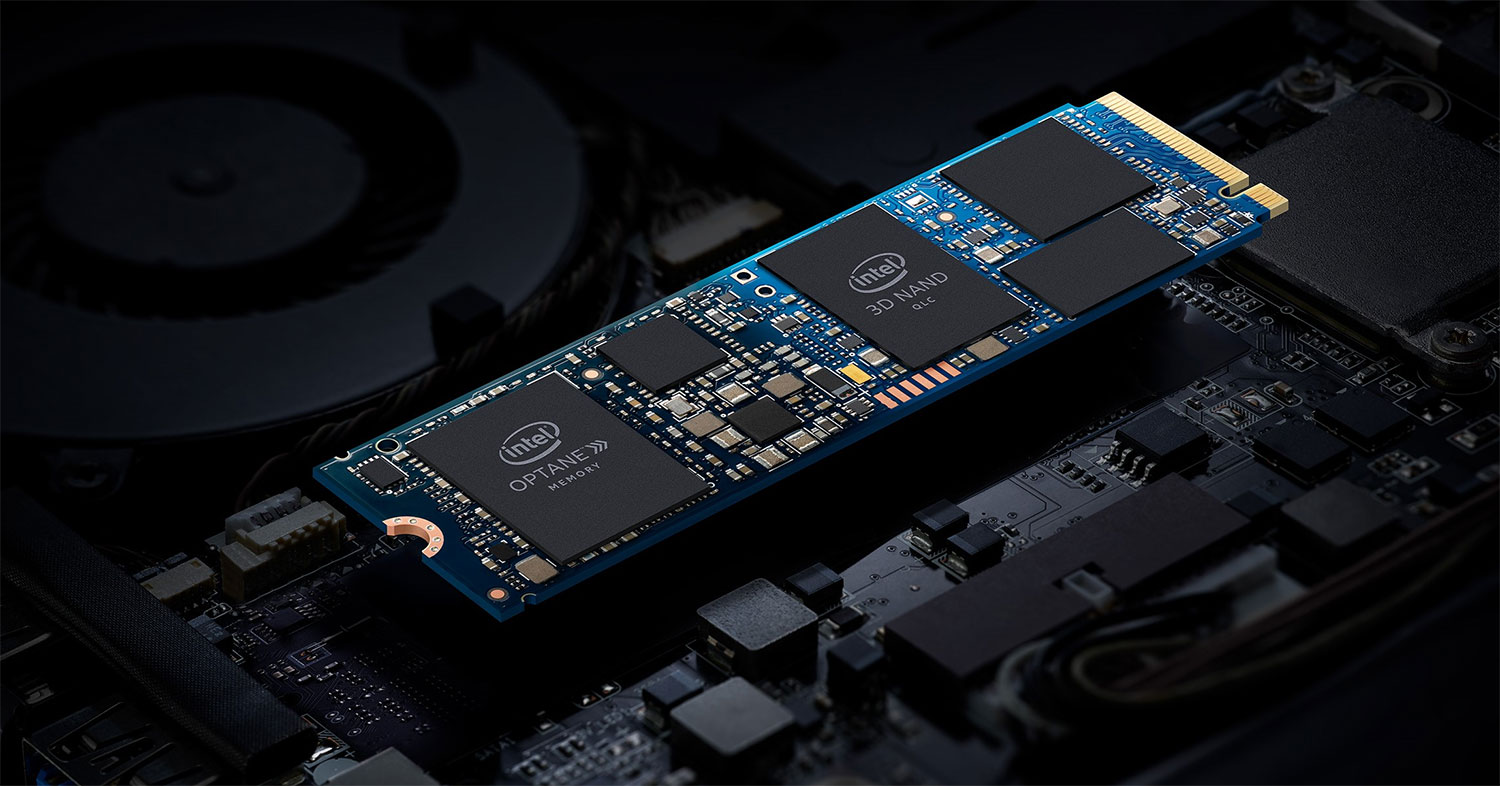Intel is now injecting Optane memory directly on SSDs for faster performance
It's only for prebuilt systems though.

Intel is finding new ways of leveraging its 3D XPoint memory, otherwise known as Optane memory. It's newest product is a competitor for the best SSD for gaming crown that combines Optane technology with quad-level cell (QLC) 3D NAND flash memory chips on a single M.2 form factor drive.
"Intel Optane memory H10 with solid state storage features the unique combination of Intel Optane technology and Intel QLC 3D NAND—exemplifying our disruptive approach to memory and storage that unleashes the full power of Intel-connected platforms in a way no else can provide," Intel's Rob Crooke said in a statement.
What this does for Intel is get its Optane technology inside thin and light notebooks and other space constrained systems, such as all-in-one desktops and mini PCs. The downside is that Intel isn't planning on selling these as standalone drives to consumers. They are only for OEMs, at least for now.
It's an interesting limitation, especially with Intel extolling the benefits of its new drives compared to the vast sea of the best NVMe SSDs with triple-level cell (TLC) NAND flash that have permeated the marketplace.
"The [Optane H10] offers a higher level of performance not met by traditional triple-level cell 3D NAND SSDs today and eliminates the need for a secondary storage device," Intel says.
Intel also claims its Optane H10 solutions enable both faster access to frequently used applications and better overall system responsiveness compared to TLC-based SSDs.
Some of the performance claims are pretty large. According to Intel, initial Core-U series systems that feature an Optane H10 drive can launch games 60 percent faster while multitasking, though it's not clear what exactly Intel is comparing against. (Probably HDDs.)
Keep up to date with the most important stories and the best deals, as picked by the PC Gamer team.
"SSDs with Intel Optane memory are the fastest compared to NAND SSDs in the majority of common client use cases," Intel says.
The new drives are basically Intel 660p SSDs with Optane memory on board. They use a x4 PCIe connection, but it's x2 for the Optane memory and x2 for the 660p (QLC NAND SSD), and you need to use RST with Optane Memory enabled to get the caching working. There's no hardware-level support built in, unfortunately.
Since Intel is only targeting OEMs at the moment, there is no information about pricing. As for capacities, the drives are being offered in 16GB (Optane) + 256GB (SSD), 32GB + 512GB, and 32GB + 1TB options.
Paul has been playing PC games and raking his knuckles on computer hardware since the Commodore 64. He does not have any tattoos, but thinks it would be cool to get one that reads LOAD"*",8,1. In his off time, he rides motorcycles and wrestles alligators (only one of those is true).


